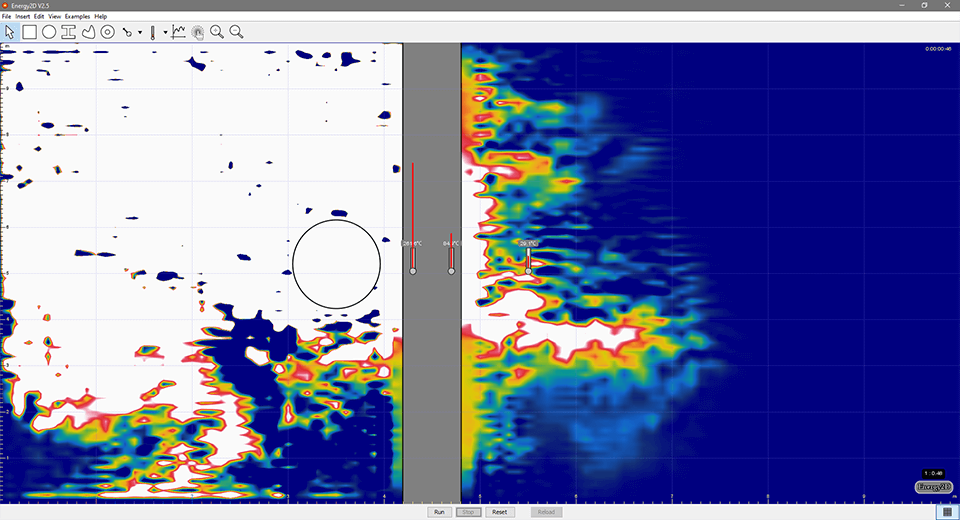May 3, 2024
July 7, 2022
June 24, 2022
January 24, 2022
October 28, 2021
July 8, 2019
November 26, 2018
September 22, 2017
June 9, 2017
September 27, 2017
July 24, 2017
September 22, 2017
September 27, 2017
November 26, 2018
January 30, 2019

Energy2D is a powerful, open access simulation software created by Charles Xie at the Concord Consortium in Massachusetts. You can visit the Energy2D web page for additional information. The foundation of Energy2D is laid down by extensive computational physics research done by Charles Xie1 and is geared to provide a sandbox-like environment to model Conduction, Convection and Radiation and their coupling with particle dynamics. Using Energy2D will essentially alleviate the strong dependence on complex mathematics for solving engineering problems or testing scientific hypotheses.
Energy2D is a suitable to academics, students, or anyone looking to have fun with heat transfer.
Energy2D is a simple program to operate, however; the program provides options for more complex simulations. The object bar on the top left side of is the main location for creating objects (with or without heat), placing objects and adjusting the view.
With these objects in place, manipulation of environmental and material properties will allow for the preparation of a desired experiment.
With a very large database of material properties at hand (1000+), Thermtest’s database has been incorporated in Thermal properties section of every object. It can be accessed simply by typing the name of the desired material within the search box and all the relevant properties will be available. Below is a step by step procedure on how to access this database.
Download: Windows Version
Requirements: Energy2D can be run on most computers quickly and does not require switching between pre-processors, solvers and post-processors which is usually required for computational fluid dynamics simulations.
Along with the ability to produce experiments with desired specifications, a listing of heat transfer experiments can be found under the Examples tab. These pre-made examples can be accessed at will and explain concepts varying from conduction and convection to solar ovens.
Simulation representing the effects of changes to Thermal Conductivity, Cross sectional area, temperature gradient, heat travel distance and specific heat on the rate of heat flow through materials.
Simulation comparing the rate of heat travel across a metal spoon and a wooden spoon.
Energy2D’s license to you does not extend to simulations created using the program. Similar to Word Documents, it is entirely free to share simulations created using Energy2D. If needed, the source code for Energy2D can be found on GitHub here.
Thermtest is furnishing this item "as is". Thermtest does not provide any warranty of the item whatsoever, whether express, implied, or statutory, including, but not limited to, any warranty of merchantability or fitness for a particular purpose or any warranty that the contents of the item will be error-free. In no respect shall Thermtest incur any liability for any damages, including, but limited to, direct, indirect, special, or consequential damages arising out of, resulting from, or any way connected to the use of the item, whether or not based upon warranty, contract, tort, or otherwise; whether or not injury was sustained by persons or property or otherwise; and whether or not loss was sustained from, or arose out of, the results of, the item, or any services that may be provided by Thermtest.